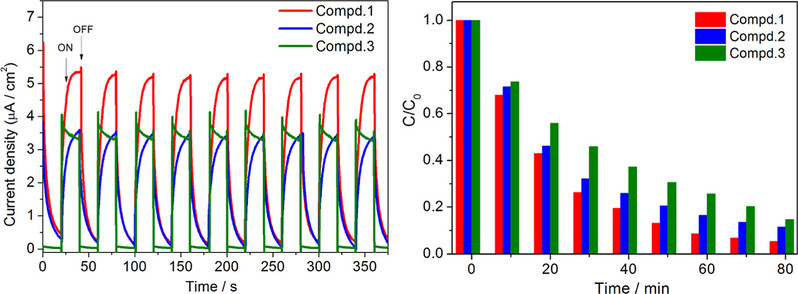Hydrazine-Assisted Synthesis, Structures, Photoelectricity, and Photocatalysis of Ternary Mercury–Tellurostannate Hybrids with Transition-Metal Complexes
Xiao Yang, Taohong Ren, Hongjin Zhu, and Dingxian Jia*(贾定先)
College of Chemistry, Chemical Engineering and Materials Science, Soochow University, Suzhou 215123, People’s Republic of China
Inorg. Chem. 2024, 63, 15, 6638–6648
Abstract: Tellurostannates are traditionally prepared by multistep reactions using the tellurides SnTe, SnTe2, K4SnTe4, or A6SnTe6 (A = K, Rb, or Cs) as precursors, which are usually prepared by the molten reaction of alkali metals Sn and Te under harsh synthetic conditions. Differently, ternary Hg–tellurostannate hybrids [Mn(en)3]HgSnTe3(Te2) (1) (en = ethylenediamine), [Mn(dien)2]HgSnTe3(Te2) (2), and [Fe(dien)2]HgSnTe3(Te2) (3) (dien = diethylenetriamine) were synthesized by one-pot reactions using Sn and Te powders as starting materials in the presence of hydrazine under mild solvothermal conditions. In 1, HgTe3 and SnTe4 units are joined via Te-sharing to form a 1-D polymeric chain [HgSnTe3(Te2)]n2n–, while the [HgSnTe3(Te2)]n2n– chains in 2 and 3 are composed of HgTe4 and SnTe4 units. The common feature of the [HgSnTe3(Te2)2–]n chains in 1–3 is that they are constructed by both the telluride anion Te2– and the polytelluride anion Te22–. 1–3 exhibited strong photocurrent responses with current densities of 5.26, 3.38, and 3.94 μA cm–2, respectively. They showed effective photocatalytic activities for methylene blue degradation with degradation ratios in the range of 85.3–94.6% after light irradiation for 80 min. Investigation of the photocatalytic mechanism showed that •O2– radicals and h+ holes were the main active substances in the photodegradation.

链接://pubs.acs.org/doi/10.1021/acs.inorgchem.3c04400